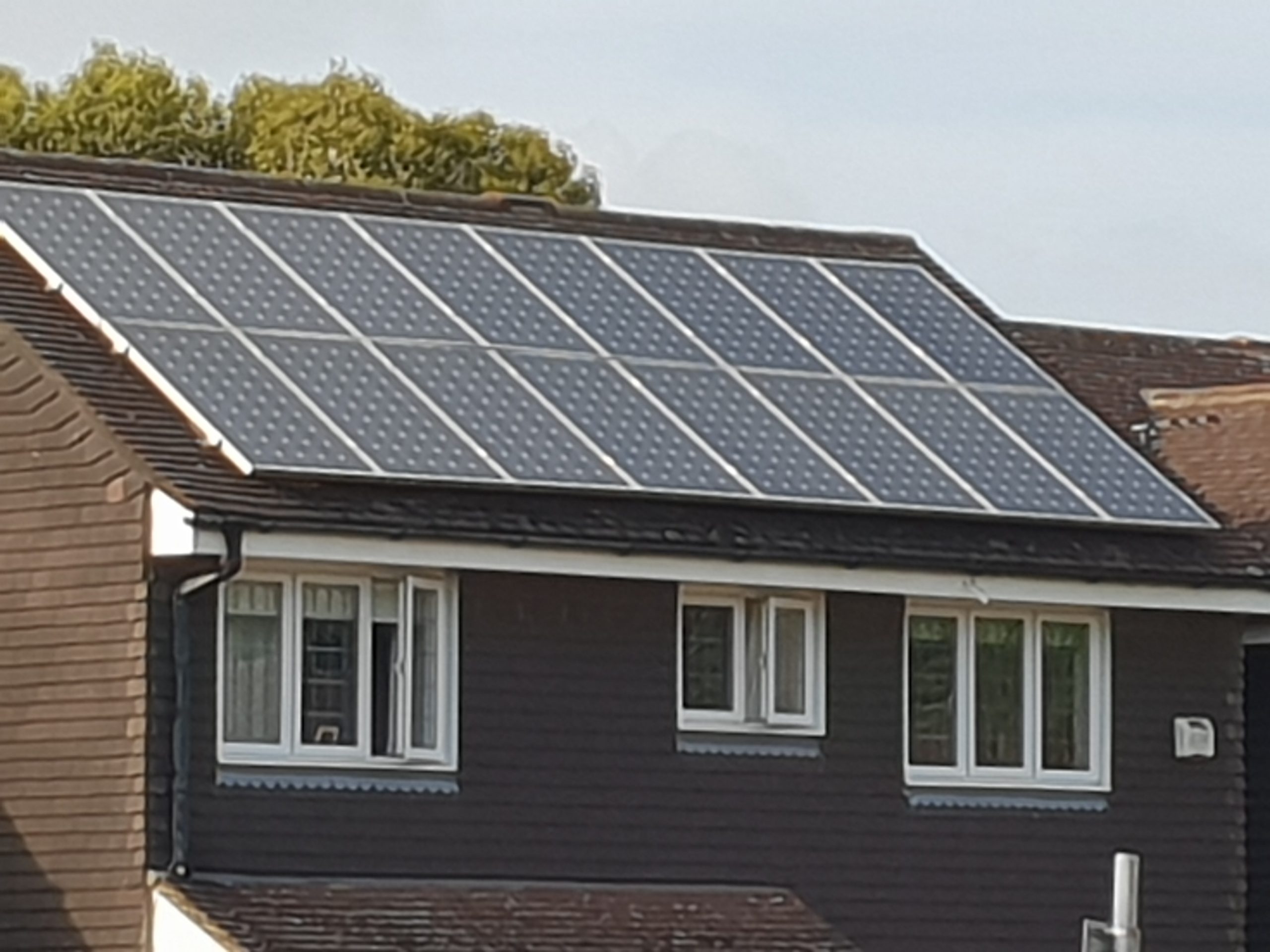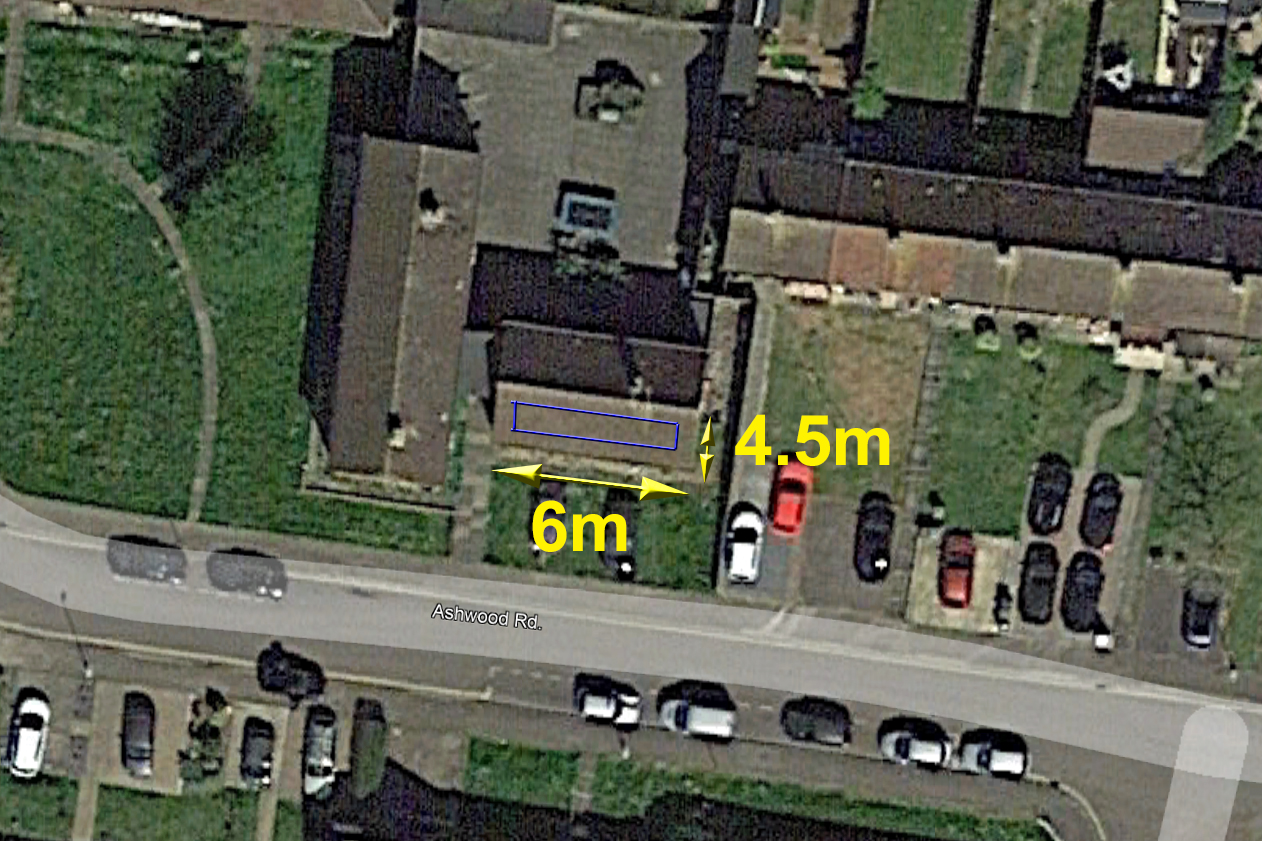For an introduction to solar panels see our Solar Made Simple 1: All You Need to Know About Solar Panels.
The first step in learning what solar panels can do for you is about understanding how many panels can fit on your roof, and hence how much electricity those panels can generate for you.
We begin this process for a customer by looking at their house roofs in Google Satellite view, and of course you can do this for yourself. We are looking for primarily south facing roofs, since the sun shines from the south where we are in the Northern Hemisphere. It isn’t necessary for a useful roof to be purely south facing, south east and south west are fine and very commonly used. Where there aren’t any such roofs we will also consider east and west facing roofs. Only if there are no such options would we consider a north facing roof as such a roof will typically only generate about 60% as much electricity as a south facing roof over the course of a year (but costs just as much to install).
Just to touch on east-west roofs for a moment in more detail. It is often assumed that south facing roofs are the best but it isn’t that simple. A pure south facing roof will generate the most electricity over a year, yes – but most of it will be around noon, and people are often out during the day. An east-west arrangement will generate less in total, but more of it will be at useful times (east will generate from breakfast onwards, west will generate in the afternoon and around dinner time) so it can be more cost effective overall. We will choose the best arrangement for your house, and in all cases give you an estimate of how much you will generate over the year (based on official guidelines) and how much money that can save you.
Let us consider the simplest arrangement in more detail so as to cover all the basics you need to know for a solar install. For example, you have a south facing roof that is 6m long and 4.5m from gutter to ridgeline. We have to allow space between the panels and the edges of the roof to prevent the wind catching under the panels, typically 30-50cm. Therefore we can estimate this roof can take two rows of five panels each for a total of ten panels (remembering from before that each panel is about 1m wide and 2m high).

One of our 16 panel installs (two rows of eight panels) – note the intentional gaps around the edges (Image: Tanjent)
So what can these panels do for us? Well, solar panels range in power from a few Watts to hundreds of Watts but for domestic use the majority fall between 340W and 400W. For simplicity let’s assume each panel can provide a typical 375W. Therefore our example array of 10 panels can provide total power of 3750 W or 3.75 kilowatts (kW, where 1 kilowatt = 1000 Watts), which is a typical size for a UK install. Note, this perfect situation of full sun is the maximum that the array could generate, its peak power, so it’s written as 3.75 kWp where the ‘p’ is for ‘peak’. You can only hope to see that at noon in the middle of June, the rest of the time it will be lower. Anyway, if that array gets full sun for an hour then it will generate 3.75 kilowatt hours (3.75 kWh), where of course 1 ‘kW hour’ is 1 kW running for 1 hour. One kWh is, of course, what we colloquially call a ‘unit’ of electricity on our utility bill, so finally something useful we recognise.
We covered quite a bit of ground in that last paragraph, so I’ll touch on it again as it’s really useful to get, if you’re trying to understand what solar can do for you. In a nutshell devices generate or use power but you are charged for how long you use that power, and power used over time is called energy. Let’s explain things from the opposite direction. Currently if you’re paying for electricity at a price that’s close to the price cap then you’re paying 28p per unit (soon to be 52p per unit!). What does that mean? Well one ‘unit’ means 1 kWh, i.e. 1 kilowatt hour. That is, you are buying 1 kW of power for 1 hour. 1 kW is the power taken to power a small fan heater or a small kettle. If you run that appliance for 1 hour it will cost you 1kWh but, equally, you will be charged for 1 kWh if you run a 2 kW device for half an hour or a 3 kW device for 20 minutes – that’s why it’s really useful to know how much power your devices use, and you think about how long they operate for. Multiply the two together to work out how much they cost to run. An oven with a power of 5kW might cost you 5 kWh in energy to run for an hour (probably a bit less once it’s up to temperature) so about £1. A power shower could be as much as 10kW of power, but if you only run it for a quarter of an hour then it will cost just 2.5 kWh of energy, so about 50p. For more information on the cost of running household appliances take a look at this Cost Calculator.
Back to solar panels. Although for any design it is possibly to accurately predict how much energy will be generated taking account of the direction of the roof, how sloped it is, where you are in the UK, etc., there is a useful rule of thumb to shortcut that: for a typical UK install you will get about 90% of its peak capacity in thousands of units. In other words, if you have a 4 kWp array then, roughly speaking, you can expect to generate about 3600 kWh per year (= 4 x 0.9). If you used all of that electricity then you would save 3600 x 28p = £1000 per year currently, going up to £1800 per year with the new price cap, and perhaps twice as much again next year. That’s why people want solar.
The next instalment of this series is here:
Solar Made Simple 3: Installing Solar Panels
It’s Time to Go Green!
If you would like to know more about Solar Panels and the PowerBanx range of home battery systems, and get a free instant quote, please complete our online form:




